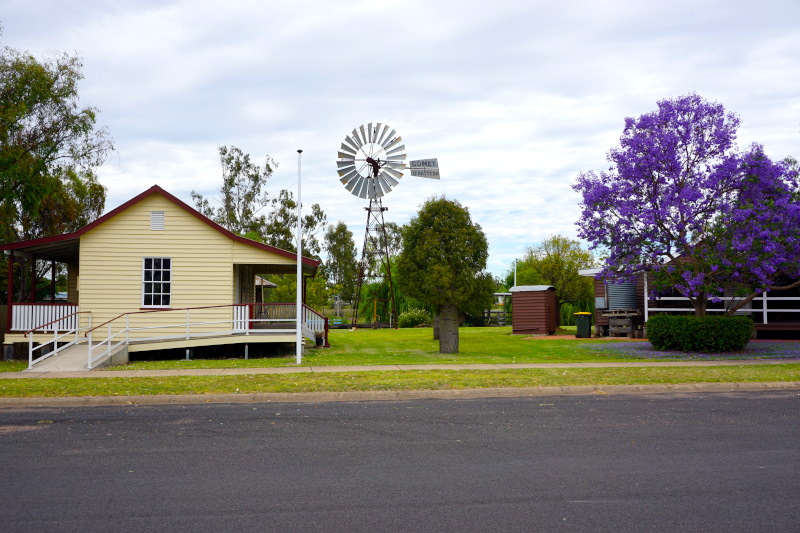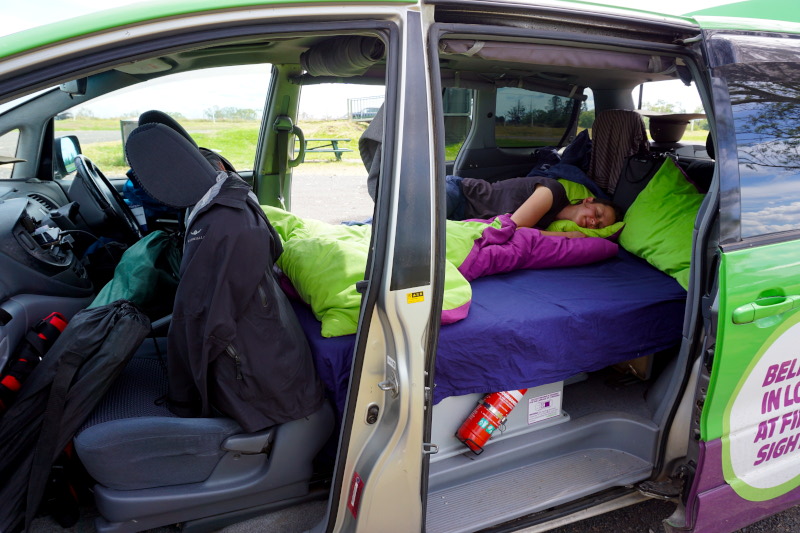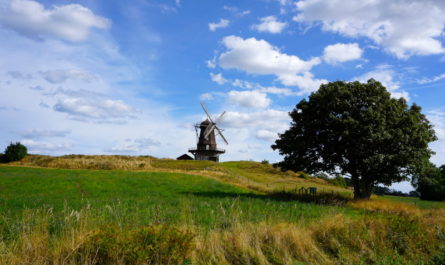Our vehicle
As promised, we would first like to present our current “home” to you in more detail today.

The bed always has to be partially disassembled for driving. A bit awkward, but you get used to it. We cook our food at a campsite in the kitchen available on site, and if there is none, or if we spend the night for free at a rest area, then of course our small gas cooker is used.
11/11-15/11/2022
The day started with the Dangar Falls, only a two-minute walk from the campsite. Afterwards, we went for a hike in the rainforest of Dorrigo National Park. Not only did we see the waterfalls Tristania Falls and Crystal Shower Falls, but we also learned that there are 5 classification levels of tropical rainforests. The main characteristics are rainfall, humidity, location and the plants and animals found there.




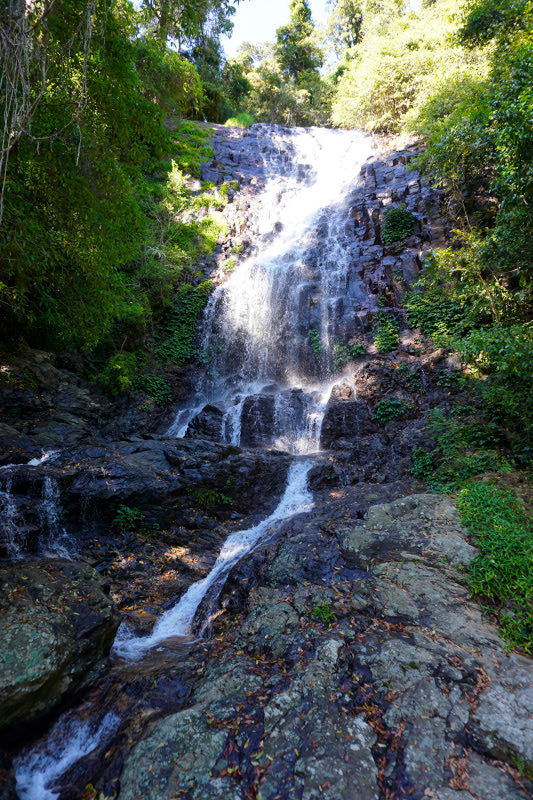




The next day we stopped at Ebor Falls before continuing to the impressive Wollomombi Falls & Chandler Falls. On the way to their viewpoints, we had to pass through a gate of the Dingo Fence. This is one of the longest man-made structures in the world and stretches more than 5600 km across the southern part of the continent from coast to coast.






A detour to Bakers Creek Falls followed. The last kilometre there turned out to be a typical Australian gravel road (at least for secondary roads in large parts of the hinterland), a more or less good dirt road.



We spent the night in Glen Innes and visited the Australian Standing Stones in the morning. A typical Celtic stone circle (used as a calendar) was erected here as a national monument in honour of the Celtic immigrants.


After we had covered a few kilometres, we enjoyed the lunch break with a fantastic view from Mount Mackenzie.



The highlight of the following day was the detour to the step-shaped rock formation Fingal Head Causeway. In geological terms, this is identical to the well-known Giants Causeway in Northern Ireland. Both were formed by volcanic lava which cooled when it reached the water and formed these unique hexagonal basalt columns.







16/11-23/11/2022
Starting the day, we reached the state of Queensland and had to set the clock back one hour (as there is no daylight saving time here). We drove on the “city highway” through Brisbane, the state capital, towards the Glass House Mountains. The mountains jutting out of what is actually a relatively flat plain were formed by lava that rose above a hotspot in the earth’s mantle during the drift of the Australian continental plate. After cooling to hard rock, the surrounding softer rocks weathered over millions of years and the volcanic plugs emerged.



Short visits to a few small towns followed.
1st stop: Kingaroy – the peanut capital of Australia
Home to Australia’s largest peanut processing plant. It has been family-owned since its inception and is one of the most successful in the country.









2nd stop: Taroom
Visit the Leichhardt Tree, named after the Prussian explorer Ludwig Leichhardt, who came along here on his first Australian expedition in 1844 and carved his initials into this tree.
Steel Wings Windmill, one of two of this type still in existence, of which only 6 were built in total.
3rd stop: Roma
Here stands an impressive specimen of the Queensland Bottletree, native to this region, with a trunk circumference of around 9.6 metres.
Since we “turned off” inland, we also constantly see the typical Australian, super-long truck-trailer combinations, the so-called road trains.
After several days on the road, a hike was finally on the agenda again. In Carnarvon Gorge National Park, we set off for this gorge, despite almost 30°C. From time to time, short side paths branch off from the main path into side gorges. Amidst the extraordinary formations of these sandstone rocks is also a sacred place of two indigenous tribes. Engravings and paintings in the rock are evidence of the active use of this site to this day.
















We spent the night at the campsite in the national park area. With kangaroos grazing & jumping over the site, which even jumped past us during our breakfast at a distance of less than 7m (we want to describe it exactly :-D). Talking to the owner of the place we learned that there is a whole pack of kangaroos living around & on the place. Some “Joeys”, as the young marsupials are called, have even been hand-fed. There is also a large colony of Flying Foxes (big bats) in the surrounding trees. At dawn & dusk, hundreds of these animals flew over the campsite and their sounds created an incredible noise level, not to mention the smell 😉












We specifically chose the Eungella National Park as our next campsite. We really wanted to see a platypus in the wild and in this park the chance is particularly high. In the evening we had no luck, but the next morning we saw several. 😀 The platypus is endemic to eastern Australia and the island of Tasmania, which means that it can only be found here in the world.











Stop at the Big Mango in Bowen. The town/environment is the “birthplace” of the world-famous Kensington Pride mango variety. At 35°C (and on 21 November), we treated ourselves to a deliciously cool mango sorbet, made from this very variety. Before we went to our campsite for the night, we “climbed” to the viewpoint over Horseshoe Bay.
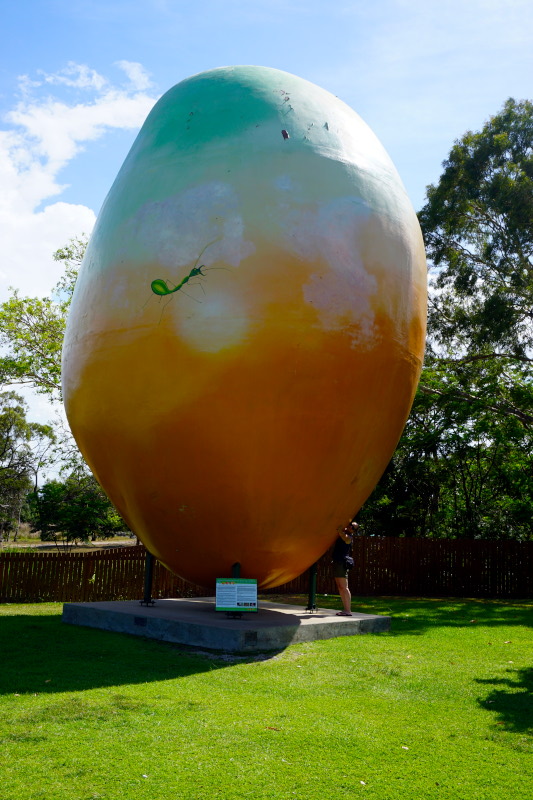















That’s it from us again so far. See you soon. 🙂


